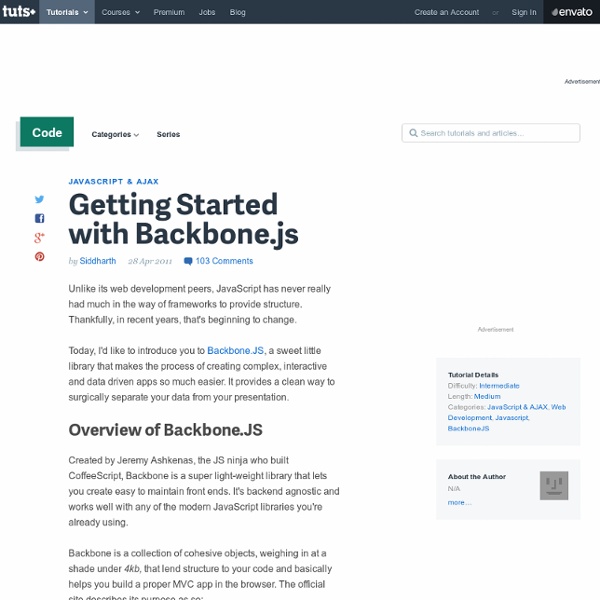



Microjs: Fantastic Micro-Frameworks and Micro-Libraries for Fun and Profit! Benchmark.js Underscore.js 18 New Useful Frameworks for Web and Mobile App Developers Thanks to the evolution in all the aspects of humanity, today web developers don’t have to waste their time on figuring out how and what to do in order to design a website. It all has already been created and all you have to do is have the right attitude and the dose of imagination. Frameworks and libraries help web developers focus on creating what they have in mind. These frameworks I am talking about can help you create the right applications for example, whether we are talking about desktop applications or mobile apps. This article will help you out with information about what frameworks you can use in order to develop desktop and mobile applications. iWebKit jQuery Mobile Sencha Touch Wijmo – jQuery UI Widgets The-M-Project – HTML5 Javascript Framework Treesaver.js – Framework for Creating Magazine-Style Layouts jQuery Form Framework – jFormer Not Just A Grid – Flexible and Modular CSS Framework Zepto.js – Minimalist JavaScript Framework for Mobile Amplify
HTML5 Boilerplate - A rock-solid default template for HTML5 awesome. Introducing Springboard › Minimal JavaScript / CSS / HTML Project Template Update: Springboard has recently undergone a complete rewrite. It’s now now much more powerful, flexible and Python (therefore cool). Checkout the Springboard GitHub page for more info.It also means that this post is now largely irrelevant, so don’t trust it – trust the README. I love HTML5 Boilerplate and use it a lot as a basis for web projects. Most importantly for me though, it still currently doesn’t support building with Google Closure Compiler which I tend to use both for it’s advanced code optimisations and for coding better Object-Oriented JavaScript (not to mention generating JavaScript documentation from the very same comments I write for the compiler). So What’s Springboard Then? Springboard is an ultra minimal JavaScript / CSS and HTML project template (or springboard). It features a very useful ANT build file which, among other things, can: Hopefully No fluff – just the very basics you need to get a project or experiment started. Check out Springboard on github Quick Setup
Adapt JS Explained This explains the origins of, and how to use, Adapt.js – (skip to How to use) First Off Let me say specifically that Adapt.js does not purport to be Responsive Web Design. The definition of RWD, as Ethan Marcotte initially described it, specifically involves using both: fluid widths and @media queries. He has further clarified this point through discussions on Twitter, posts on his blog and public presentations. I just wanted to be clear that I never tagged Adapt.js as “responsive” – and preemptively (before launching Adapt.js) assured Ethan privately via email that I would not attempt to muddy the waters. Waxing Poetic If anything, Adapt.js heralds from back alleys of the old-school. Don’t get me wrong, I certainly see the appeal of being able to manage everything via CSS. Mastering CSS is akin to building amazing things with Legos. But I digress. Grey’s So instead, I decided to let the idea sit on the shelf for awhile. … based on browser width.